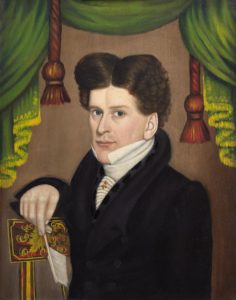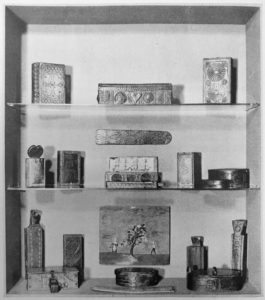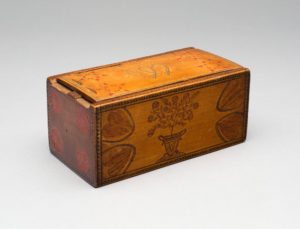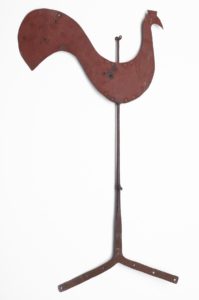Photography & Folk Art at the Art Institute of Chicago
by Elizabeth McGoey, Ann S. and Samuel M. Mencoff Associate Curator of American Decorative Arts, Art Institute of Chicago
and Elizabeth Siegel, Curator of Photography, Art Institute of Chicago
In the 1930s, a rising interest in early American vernacular arts, collectively referred to as folk art, converged with major photographic documentation projects of the Great Depression. This impulse to collect the past and record the present flourished concurrently at this critical period in American history. Artists, curators, collectors, and government administrators sought to express American visual identities that were not only distinct from Europe, but also symbolic of an American culture that was egalitarian, unpretentious, and self-made.
This fall, the Art Institute of Chicago will open an exhibition, Photography & Folk Art: Looking for America in the 1930s, that explores the connections between the fields of folk art and documentary photography in the Depression era for the first time. Drawn almost entirely from the permanent collection of the Art Institute of Chicago, the exhibition is comprised of over 100 works of decorative art, painting, sculpture, and photography. By engaging with American vernacular culture, these works represent the expansion of what had been considered fine art. The show examines how a varied range of cultural agents forged a new sense of American visual identity through the art and depiction of everyday people, places, and things. It also aims to encourage critical thinking about the nationalist ideologies under-pinning artistic production, display, and collecting in the 1930s.
At the heart of the exhibition are works that represent two major governmental projects undertaken to document and catalogue everyday life in America: the Works Progress Administration’s Index of American Design and the Farm Security Administration’s photography program. The intent of the Index was to create a visual archive of applied and folk art, which would make “typical examples of an indigenous American character” available for study. Organizers approached this systematically. They studied, photographed, and rendered in watercolor specified object types, such as carving, ceramics, furniture, and metal work, that fell under particular subjects, including domestic and household arts, Pennsylvania-German crafts (Figure 1), rugs, and Spanish-American crafts. The artists employed by the Index produced an unparalleled visual repository of American material culture.
In these very same years, the Resettlement Administration, later the Farm Security Administration (FSA), hired some of the country’s most talented photographers to document the plight of everyday Americans and the government’s role in assisting them. For all intents and purposes, the project yielded the photographs that comprise the indelible national image bank of the Great Depression. Like the Index of American Design, FSA photographers followed detailed and prescriptive instructions, or “shooting scripts,” to capture specific subjects such as “needy families” and a “crowd going to or coming from church.” Photographers, such as Walker Evans, Dorothea Lange, Russell Lee, and Arthur Rothstein (Figure 2), also focused on elements of an American vernacular, including hand-painted signs, scrawled graffiti, advertisements, city streets, and transportation. Their images of the everyday world and ordinary citizens collectively represent an attempt to define the American character through photographs.
These objects and images of everyday life inspired a new range of collectors—both individual and institutional—who shaped a more expansive vision of American art. Exhibitions of folk art and documentary photography did not take place with any regularity before the 1930s. The synchronous acceptance of these art forms within institutions was rooted in shared ideologies of national pride and the desire to articulate America’s creative past as a means to inspire contemporary artistic production.
At the Art Institute, a collection of American vernacular arts was born from folk art enthusiasts actively acquiring in the 1930s. In 1938, for instance, museum trustee Robert Allerton purchased a pair of pendant portraits by Jonas Welch Holman now in the Art Institute’s collection (Figures 3 & 4) from Edith Halpert’s American Folk Art Gallery. Massachusetts collectors Bernard and Margaret Behrend amassed an extensive group of 17th- and 18th-century New England decorative arts throughout the 1920s and 1930s. Many of these works went on view at the Art Institute as part of a 1945 loan exhibition, The Craft Tradition in American Household Art (Figure 5), before entering the collection in 1946 (Figure 6). Likewise, Elizabeth Vaughan purchased early American furniture, textiles, silhouettes, and other objects (Fig. 7) in the 1930s and 1940s, bequeathing her collection to the Art Institute in 1950. Photography + Folk Art establishes a dialogue between the introduction of folk art within public collections and the simultaneous institutional embrace of documentary photography. Folk arts stand as vibrant and dynamic examples of American ingenuity, and documentary photography—particularly that of Walker Evans (Figure 8), Berenice Abbott, and Dorothea Lange—as a new art form emblematic of modern American character and vitality.
“Photography & Folk Art: Looking for America in the 1930s” opens September 21, 2019, and runs through January 19, 2020. This exhibition is supported by Vicki and Tom Horwich.
NOTES:
1 Federal Art Project. “Supplement No 1 to the Federal Art Project Manual: Instruction for Index of American Design.” Washington, D.C.: Federal Art Project, January 1936.
2 United States Resettlement Administration. Letter from Edwin Locke to Arthur Rothstein, 1936. Photograph. https://www.loc.gov/item/2018645764/.

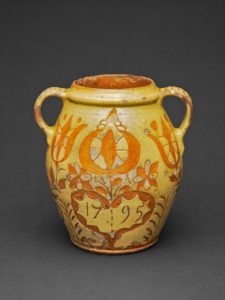
![Fig. 2. Arthur Rothstein (American, 1915–1985). Girl at Gee’s Bend, Alabama [Artelia Bendolph], April 1937. Gelatin silver print; 18 × 24.4 cm (image); 20.7 × 25.4 cm (paper). The Art Institute of Chicago, through prior gift of Simon and Bonnie Levin, 2018.386.](https://decorativeartstrust.org/wp-content/uploads/2019/07/Fig.-2-IM033860-int_print-300x221.jpg)

